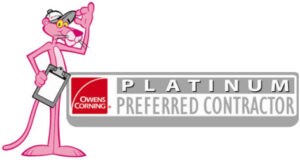Every home in the Grand Strand area relies on a well-built roof for protection, comfort, and lasting value. Yet, many homeowners don’t realize just how many roof components work together to create a durable roofing system. This guide breaks down the most important roof parts and explains why each one matters, helping you understand your home’s roof structure, avoid structural damage, and plan future roof replacements with confidence.

The Foundation of a Roof: Trusses, Decking, and Sheathing
The foundation of any roofing system begins with its structural components, the roof trusses, roof decking, and roof sheathing, which give the roof its shape and strength.
Roof Trusses: Roof trusses are the skeletal framework of a roof. These structural components are designed to distribute weight evenly, maintaining balance across both horizontal and vertical surfaces. Whether it’s a hip roof, flat roof, or gable roof, trusses determine the roof’s overall stability and shape. Strong collar beams connect the trusses, increasing load-bearing strength and preventing sagging in older homes.
Roof Decking and Roof Sheathing: The roof decking (or roof deck) lies directly on top of the trusses. Usually made of plywood or OSB, this layer provides a firm surface for the roof covering. Roof sheathing serves the same purpose, reinforcing the structure beneath asphalt shingles, roof tiles, or metal panels. A high-quality roof deck enhances the roof’s structural integrity and prevents water infiltration, especially in the humid coastal climates of South Carolina.
Protective and Functional Elements: Drip Edge, Overhang, and Frieze Board
Even the smallest roof component can make a big difference in protecting your home from water damage.
Drip Edge: Installed along roof edges, the drip edge (typically made of metal flashing) channels rainwater away from the roof deck. By directing runoff into the gutter, it prevents water infiltration beneath shingles and helps protect vulnerable areas near the eaves.
Roof Overhang and Horizontal Eave: The roof overhang and horizontal eave extend beyond the walls, shielding siding and foundations from rain. These features work alongside the drip edge to keep walls dry and add aesthetic appeal to the roofline.
Frieze Board: Located beneath the overhang, the frieze board adds decorative flair while helping to block drafts from entering your attic. It also conceals gaps between the siding and the eaves, maintaining both appearance and efficiency.
Key Roofing Materials and Roof Coverings
A roof’s top layer, its roof covering, provides the most visible protection. Roof coverings can be made of different materials depending on climate, style, and budget.
Asphalt Shingles: Asphalt shingles are one of the most common roofing materials used in the Grand Strand area. They offer affordability, durability, and easy roof replacement options. Asphalt shingles also resist heat and humidity, making them ideal for coastal homes.
Metal Roofing and Roof Tiles: Metal roofing, often made from aluminum or steel, offers exceptional longevity and weather resistance. Roof tiles, on the other hand, add charm and work well for sloped roof styles like gable or hip roofs. Both are strong roof coverings that protect against wind-driven rain and sun exposure.
Synthetic Materials and Underlayments: Modern synthetic materials, including synthetic underlayment, mimic traditional shingles or tiles but provide improved fire resistance and water protection. Beneath the outer covering, a waterproof membrane or underlayment acts as a final barrier against water damage and leaks.
Roof Ventilation for Coastal Homes
Proper ventilation keeps your roofing system healthy and extends its lifespan, especially important for humid coastal regions like Myrtle Beach.
Ridge Vent and Roof Vents: The ridge vent runs along the roof’s ridge, or horizontal line at the top, allowing hot air and moisture to escape. Additional roof vents, such as gable vents, soffit vents, intake vents, and exhaust vents, create balanced airflow between the attic and roof deck. This proper ventilation helps regulate temperature and prevents condensation that leads to water damage or mold growth.
Skylights and Roof Hatches: Natural light from skylights can brighten living spaces, while roof hatches make maintenance easy. Both features must be properly sealed with roof flashing to prevent leaks in vulnerable areas.

Essential Accessories: Roof Valley, Flashing, and Gutters
Roof Valleys: A roof valley is where two roof planes meet, and one of the most vulnerable areas for leaks. Properly installed roof valley flashing and metal flashing prevent water from pooling or seeping through.
Chimney Flashing: Chimney flashing is another essential roof component that protects the joint where the chimney meets the roof covering. When damaged, it’s a common source of leaks that lead to costly structural damage.
Gutter Systems: Gutters collect water along the eaves and direct it safely away from the home’s foundation. Combined with a solid drip edge, they help prevent erosion, leaks, and shingle damage caused by standing water.
Roof Reinforcements: Underlayments, Eaves, and Spare Parts
A few additional roof components strengthen the overall system and ensure longevity.
Synthetic Underlayment and Waterproof Membrane: Beneath the shingles, synthetic underlayment acts as a secondary waterproof membrane. It prevents water infiltration if shingles are blown off during storms.
Eaves and Roof Plane Alignment: The eaves and roof plane alignment ensure water runs off smoothly. If misaligned, they can create vulnerable areas that trap water and debris.
Spare Parts and Replacement Components: Keeping spare parts, such as extra asphalt shingles, flashing, and roof vents, on hand makes roof repair or roof replacement quicker and more consistent. Always use matching replacement parts to maintain roof uniformity and performance.

When to Schedule a Roof Replacement
Even with strong materials and proper ventilation, every roof eventually needs attention. Homeowners should consider a roof replacement when they notice:
- Curling or missing asphalt shingles
- Water stains on ceilings (a sign of water infiltration)
- Rusted or loose roof flashing
- Deteriorated roof valleys or drip edges
If these signs appear, contact a qualified roofing contractor for inspection before minor leaks become major structural damage.
How Leverage Roofing Keeps Grand Strand Roofs Strong
Leverage Roofing proudly serves homeowners throughout Murrells Inlet, Myrtle Beach, and the Grand Strand. As a trusted local roofing contractor, our team inspects every roof component to protect your home’s structural integrity.
We handle everything, including roof repair and roof replacement, gutter installation or repair, commercial roofing services, and siding installation. Our experts understand coastal challenges, such as salt air, humidity, and storm-driven rain, and provide solutions tailored for long-term protection.
Leverage Roofing delivers precision, craftsmanship, and peace of mind for any roofing project. Contact our team today to schedule your roof inspection or learn how we can help keep your home safe and beautiful for years to come.


